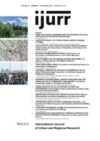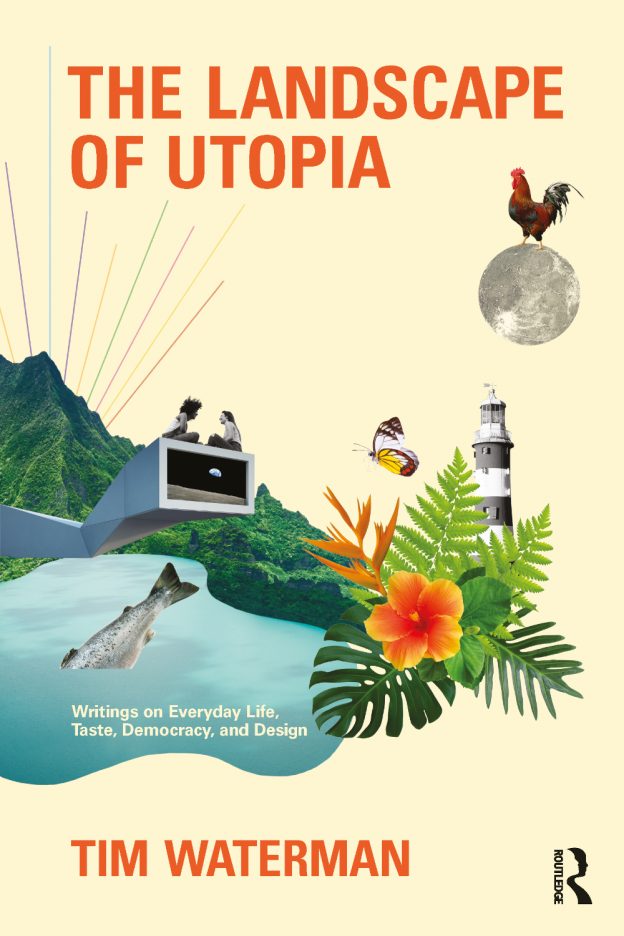The idea of ‘utopia’ is usually understood according to its Greek etymology as a ‘non-place’ (from the Greek ou–topos), and such a reading is often used to demonstrate its supposed inherent impossibility—both geographically and historically. Historically, utopias have been understood as representing the ‘horizons of possibility’, and the utopian vision has thus been seen as something to aim for: a distant location where there is a better version of the world, only accessible under the most rigorous of conditions. Such is the status of the ‘world of ideas’ in Plato, or the Christian vision of what redemption brings; this is the purpose of Fourier’s phalanstère, and the post-revolutionary landscape of Marx’s communism. Perhaps it goes against the author’s intention to provide such an overwhelmingly Hegelian reading of this post-structuralist work, but placing it within such a strong theoretical context underlines his success in preserving the specificity and heterogeneity of landscape experiences and potentialities. Tim Waterman’s book comes as a refreshing and engaging exercise in sublating the contradictions of the late modern city. Landscapes matter for Waterman: they can emancipate, educate, seduce and liberate or enable co-optation, and he shows how they are more than mere backgrounds, deprived of agency. The book opens with a diverse landscape of mainly post-structuralist references that are important for the author. Taking us back to the anarchist ideas of ‘mutual aid’ (Kropotkin), ‘insurgent democracy’ (Abensour) and ‘human as nature’ (Reclus), Waterman rightly reclaims these anarchist inspirations for his theorizing of the lived world. Given the book’s intellectual proximity to the writings of Michel de Certeau and Henri Lefebvre as well as classical anarchist thought, we can read it as post-structuralist, though not necessarily postmodernist.
Chapter 2, which for this reviewer represents perhaps the most significant part of the whole book, discusses the nexus of landscape and power as portrayed in the James Bond movie series. Introducing the reader to Waterman’s own polyvocal, multi-layered method, it analyses the importance of landscape for cinematic productions of pop culture. It confirms the old situationist thesis that images have replaced human relationships, whereby the production of landscape constitutes a clear example of this trend. The author’s meticulous reconstruction of class distinctions, racializations, remnants of colonial politics and gender bias functions as a clever use of media studies to showcase how the affective and intellectual implications of specific landscapes are mediated, both in buildings and in outdoor spaces. The chapter brilliantly demonstrates the persuasiveness and agency of the supposedly ‘neutral’ backgrounds of everyday life, and Waterman builds a convincing argument about the specific power of landscape as a ‘non-human actor’. The immediacy and violence of neoliberal gentrification is also present, as illustrated in the more recent films in the Bond series.
The short chapter 3, discussing the meaning-less buildings of contemporary architecture, contrasts sharply with the author’s detailed study of taste in chapter 4, in which a plethora of sensations and tastes, hunger and satiety are examined alongside the complexity and simplicity of flavours and historical details about certain brewery products from Belgium. The comparison of capitalism and yeast is a striking one, as it comes in the section of the chapter entitled ‘The Tower of Babel’ which discusses the late modern hybris—here used to depict the conflation of place (the historical production of beer) with taste (the easier but also more confusing ways of purchasing beer today). This conflation of historical sophistication with modern simplicity builds Waterman’s critical approach to contemporary and historical appropriations of the rural by the municipal, undermining the naturalization of what was in fact a very elaborate form of cultivation, as well as the artificial ‘return to nature’ by city dwellers who are not interested in rural life at all.
The next chapter, ‘The Global Cucumber’, provides a critical reconstruction of the architectural and urban transformations that preceded Milan’s hosting of Expo 2015, and unpacks the much-neglected topic of the intrusion of such mass events (particularly sports competitions, football championships and the Olympics) into the present and future of today’s cities. Examining the current economic crisis—which appeared in place of the promised boom—Waterman describes, among other things, the unequal distribution of costs and gains between the city’s inhabitants and global corporations, and the peculiar changes to landscape and infrastructure that came about as a result. The ambitious plans for Expo 2015 were initially site-specific and concerned with maintaining the local urban balance by respecting the already existing infrastructure. In what transpired, however, the orientation towards profit and easy gains replaced the contextualized plans, resulting in such a transformation of the city landscape as to render the entire area useless after the expo finished. The mythical ‘global cucumber’ stands for all these interventions in the landscape which neglect its social dimension and become instead a purely income-generating short-sighted solution.
Chapter 10 offers up a conversation between Waterman and the artist, theorist and curator Ruth Catlow about situating the digital commons. The notion of occupation is presented here as a natural form of inhabiting the commons collectively, including in its digital form. The process of knowledge production is shown to be collective as well as dialogical—in both the content and shape of this particular chapter. The next essay, co-authored with Catlow, introduces the acronym DIWO (do it with others) as an important element of the shared experience made possible through digital media and the internet, but also through a collaborative, non-competitive approach to knowledge production—especially difficult in today’s precarity-based neoliberal world of academia.
The politics of landscape is a central theme across chapters 16 to 21, which analyse the more general perspective and larger scale of protest, climate crisis and the COVID-19 pandemic. Democracy, already discussed in earlier parts of the book, is here convincingly presented as the enacted claim to access, exemplified by the Occupy! movement. The introduction of the notion of habitat leads to a discussion of the Holocene, with its attendant fears and onus on architecture to build positive visions of the future. Marti Franch’s project of the green spaces of Girona offers a holistic view in place of one which only focuses on one park or city garden. Similarly, a city scandal—the obituary for the Garden Bridge in London—reminds us of the various losses today’s cities have to survive as a consequence of neoliberalism and gentrification. The pandemic landscapes of the first COVID-19 lockdown remind us of the emptiness and care we experienced in 2020.
The closing part of the book focuses on London’s sad condemnation of the urbanistic and architectural version of TINA, with the rise of the neoliberal style of telecommunications, information and networking architecture. Waterman discusses the inevitability of the neoliberal commodification of the urban landscape, where ‘beige holes’ appear, marking the failed attempts to disguise sites of value production, privatization and competition in the form of fake ‘public spaces’. Referencing Owen Hatherley’s concept of ‘pseudomodernism’, Waterman deconstructs the newly created gardens and squares in London, with their false promise of a return to the ‘public’, exposing them instead as a dystopian reminder of how the public is in fact a shrinking concept under neoliberalism.
Chapter 24 introduces the idea of ‘storytelling’, reminding us how the discursive content of the supposedly mute landscape’s presence and production is always already embedded in notions, narratives and fabulations. Here again, national progress is debated as a progressive vision of shared development and the creation of the ‘liveable city’ through taste and democracy. Such a synesthetic approach to the city, which manages to combine the various contradictory needs of its inhabitants—being at once embodied and political, individualistic and willing to collaborate—makes the image of utopia somewhat heterotopic and shaped by the given conditions. Nonetheless, it is one that surpasses all the existing standards.
Paradoxically, in its declaratively anti-dialectical fashion, Waterman’s book successfully manages to sublate some of the late modern contradictions between mediatized and embodied reality, project and realization, commercial and socially inclined perspectives. In doing so, it presents an innovative, heterogeneous practice that combines different forms of writing—essay, research paper, journalistic article and dialogue—to stimulate the synthetic work of the imagination. While Lefebvre wanted the city to embrace all the contradictions inherent in human desire, Waterman’s Landscape of Utopia speaks to the way our needs and wishes have always been embedded in the landscapes that shaped them. The contradictions of late capitalist living are thus further complicated by the sensually active environments which simultaneously enhance the work of the imagination. Waterman’s book is a fascinating invitation to rethink landscape and to experience it holistically, without reducing it to a mere, inactive ‘background’.
Ewa Majewska, SWPS University of Social Sciences and Humanities, Warsaw
Tim Waterman 2022: The Landscape of Utopia. Writings on Everyday Life, Taste, Democracy, and Design. New York: Routledge.Cover used with permission of Routledge.
Views expressed in this section are independent and do not represent the opinion of the editors.

